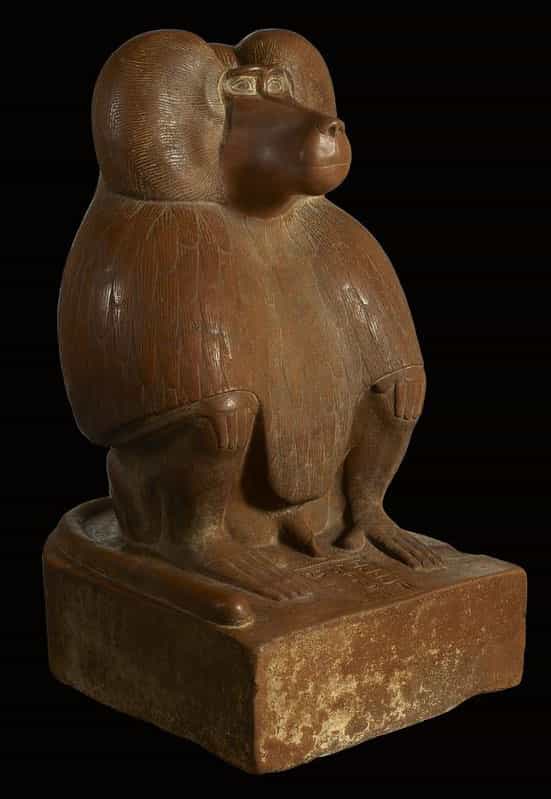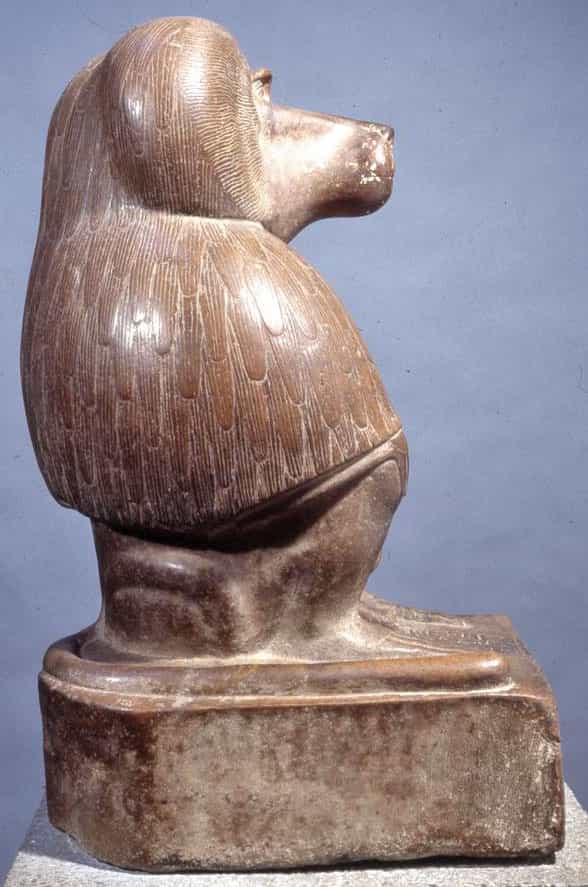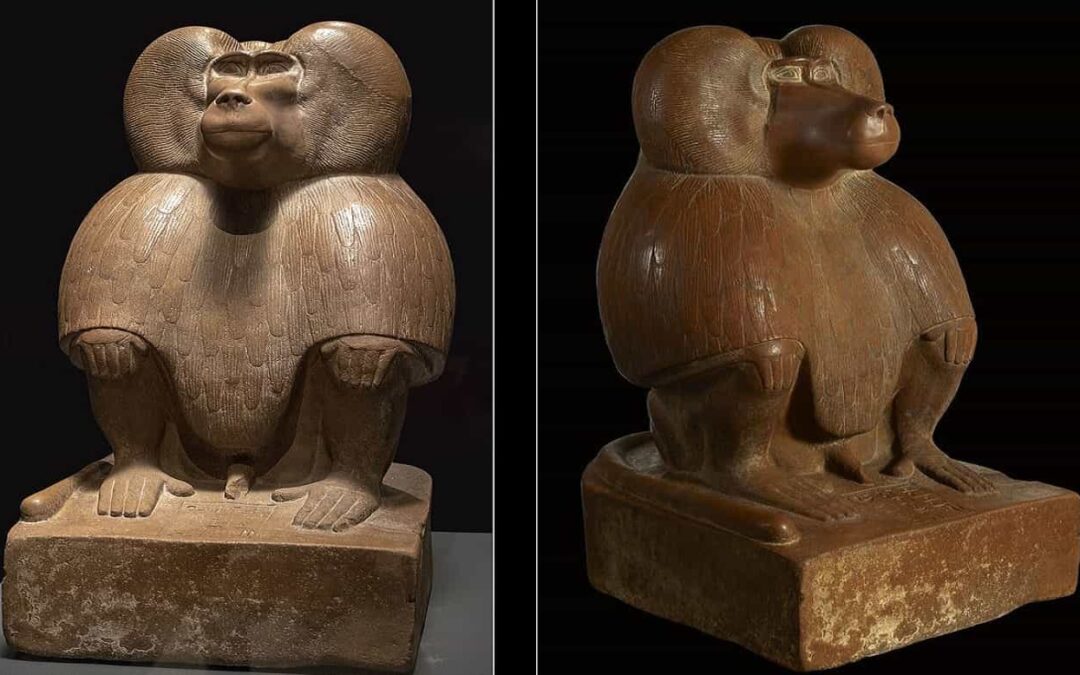The Baboon Statuette is a sculpture belonging to ancient Egyptian art, dated approximately between 1390 BC and 1352 BC.
It is important to note that the year and place of the discovery are unknown.
The first known information about it is that it was acquired in 1833 AD by Joseph Sams in a sale at Sotheby’s auction house in London, United Kingdom.
In 1834 AD, the Baboon Statuette was purchased by the British Museum in London, where it became part of the art collection in the Department of Egyptian Antiquities.
Description
The sculpture measures 68.50 cm in height, 38.50 cm in width, 45 cm in depth, and weighs 180 kg.
It is made of red quartzite and was crafted using incision and carving techniques.
The sculpture depicts a baboon sitting on its haunches with its front legs resting on its knees. It has a bas-relief hood with a “feathered” appearance.
The baboon figure rests on a semi-elliptical pedestal made of the same material as the rest of the sculpture.
At the top of the pedestal, there is an incised inscription in hieroglyphic script. The inscription consists of three vertical columns within a rectangle, with the upper edge in the shape of an elongated celestial sign.
The cartouche is also inscribed with the name of Pharaoh Amenhotep III.
Regarding the state of preservation, it should be noted that a part of the left ear was broken in ancient times and a piece was placed in its place.
The snout is also broken, but this fracture is more recent. The pedestal is slightly damaged in some places, but not to the extent of mutilating the inscription.
The Baboon Statuette is currently housed at the British Museum in London, United Kingdom.










